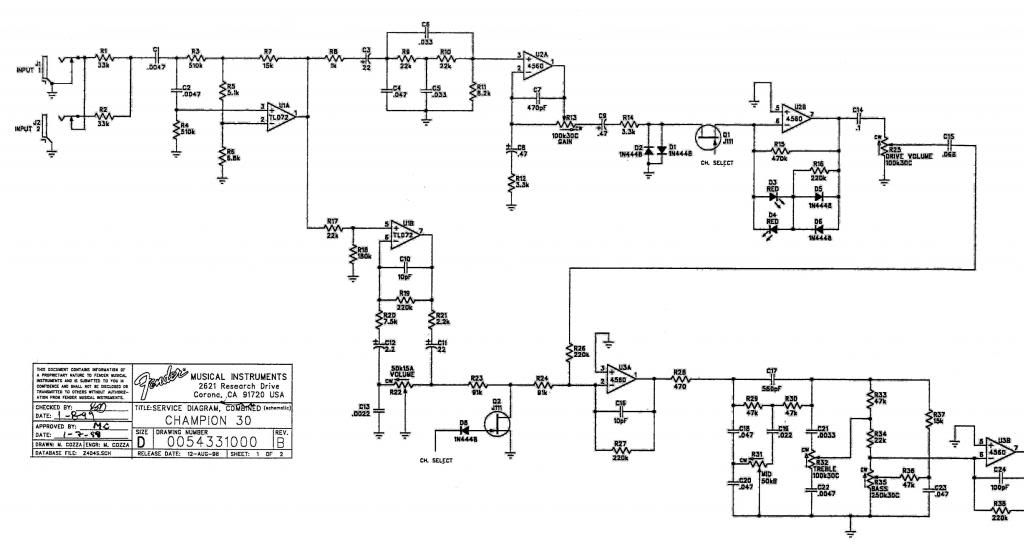I have some questions about the design of the clean channel which is extremely bright. I was hoping that someone might be able to explain the "ladder" arrangement for U1B. I was told earlier that C13 (.0022uF) was like a bright cap on a tube amp as it is removed from the circuit as you turn the Normal volume up. After some experimentation I replaced that with a 1000pF cap in series with a 1K6 resistor (along with many other changes) but the clean channel is still brighter than I'd like.
I have a hunch that R20(7K5) and C12(2.2uF) might set the overall brightness of the clean channel, especially as you turn the Normal volume control up. Any thoughts on that?
The full preamp:

The same but cropped:

I have 3 of these amps that I am experimenting with. I have the first one sounding really nice on both channels, although I usually keep the Treble at 1 and the Mid at 10. #3 is still stock so I can experiment with R20 and C12.
Thanks!
Steve Ahola
P.S. I have questions about the tone stack, too, but will ask them later.


I have a hunch that R20(7K5) and C12(2.2uF) might set the overall brightness of the clean channel, especially as you turn the Normal volume control up. Any thoughts on that?
The full preamp:

The same but cropped:

I have 3 of these amps that I am experimenting with. I have the first one sounding really nice on both channels, although I usually keep the Treble at 1 and the Mid at 10. #3 is still stock so I can experiment with R20 and C12.
Thanks!
Steve Ahola
P.S. I have questions about the tone stack, too, but will ask them later.

 After experimenting a bit I ended up replacing the 470k resistor R15 with a 270k resistor in parallel with a 100pF ceramic cap which smoothed out the sound a bit, getting away from the stock "buzz saw" voicing of the Drive channel. However I was wondering how those diodes and LEDs affected the circuit...
After experimenting a bit I ended up replacing the 470k resistor R15 with a 270k resistor in parallel with a 100pF ceramic cap which smoothed out the sound a bit, getting away from the stock "buzz saw" voicing of the Drive channel. However I was wondering how those diodes and LEDs affected the circuit...
Comment